Jimmy the Gent

Brief Synopsis
Cast & Crew
Michael Curtiz
James Cagney
Bette Davis
Allen Jenkins
Alan Dinehart
Alice White
Film Details
Technical Specs

Synopsis
Jimmy Corrigan specializes in finding heirs for people who die intestate. If he cannot find the legitimate heir, he has no qualms about finding someone who fits the description of the missing person and, afterward, taking a commission. His rival, Charles Wallingham, has a more refined front, but underneath, he is just as much of a confidence man. This underlying dishonesty is not apparent to Wallingham's assistant, Joan Martin, who learned the trade from Jimmy. She is in love with Jimmy, but refuses to be involved with him as long as he continues his unethical practices.
Wallingham has a monopoly on deaths that occur at the emergency hospital. When a seemingly destitute woman dies, hospital workers find bonds and jewels sewn into her coat. A spy in Wallingham's office telephones the news to Jimmy before the spy is caught and fired by Joan. After Joan lectures Jimmy about his lack of ethics, Jimmy hurries to Wallingham's office, where he arrives just at tea time. Impressed by the refined attitude at the office, he offers to trade Wallingham the information he has on the dead woman for advice on how to become a gentleman.
Joan finds the dead woman's niece, Posy Barton, while Jimmy tries to find Posy's father, Monty Barton. On a tip from a drug addict, they find Barton hiding from a murder charge under an alias. Using a ruse, Jimmy tells Barton about the inheritance. Barton claims that he killed in self-defense, but that Gladys Farrell, the only witness, has accused him of murder. Jimmy develops a plan that will allow Barton to collect his money. He marries Barton to Mabel, the girl friend of his assistant, Louie, with Mabel using a false name. Then he offers half the money to Gladys if she will marry Barton so she cannot legally testify against him. Without Gladys' testimony, Barton's case is dismissed and he inherits the money. When Gladys tries to collect her share, Mabel points out that she was married to Barton first and therefore Gladys' marriage is not legal.
Joan is disappointed when she learns about Jimmy's trick, as Jimmy had told her he was going straight. She decides to marry Wallingham, who is interested in her, but not in marriage. Jimmy protests, signing his half of the money over to Posy, and gives it to Wallingham to give to her. Jimmy and Louie witness Wallingham cash the check and use the money to buy one ticket to England. Jimmy sends Joan a phony telegram from Wallingham, which invites her to join him on board ship. Just before the boat sails, Jimmy is able to prove to Joan that Wallingham is crooked. He mails the check to Posy and takes over Wallingham's cabin, where Joan will join him after they are married by the captain.

Director

Michael Curtiz
Cast
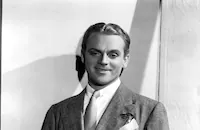
James Cagney

Bette Davis

Allen Jenkins

Alan Dinehart

Alice White
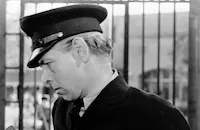
Arthur Hohl

Phillip Reed
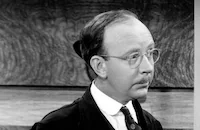
Hobart Cavanaugh

Mayo Methot
Renee Whitney

Ralfe Harolde

Merna Kennedy
Philip Faversham
Nora Lane
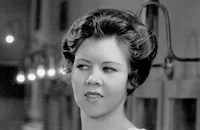
Mary Treen
Eula Guy
Camille Rovelle
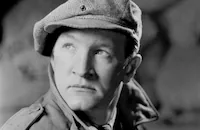
Joseph Sauers
Stanley Mack
Tom Costello
Ben Hendricks
Billy West
Eddie Shubert
Lee Moran
Harry Wallace
Robert Homans
Milton Kibbee
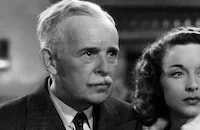
Howard Hickman
Juliet Ware
Rickey Newell
Lorena Layson

Bud Flannigan
Dick French
Jay Eaton
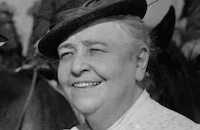
Jane Darwell
Harold Entwistle
Harry Holman

Joseph Crehan
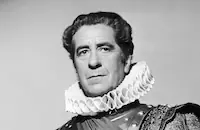
Robert Warwick
Charles Hickman

Leonard Mudie
Olaf Hytten
Vesey O'davoren
Crew

Videos
Movie Clip



Trailer
Film Details
Technical Specs

Articles
Jimmy the Gent
The stunt likely did not sit well with his leading lady either, an up-and-coming young actress named Bette Davis. She and Cagney were actually on the same wavelength at the time, both determined to get better parts, although apparently they did little commiserating over their common lots during filming. In later years, they would be quick with praise and admiration for each other's work and integrity (and would appear together again, in The Bride Came COD, 1941). But at this point Davis was angry about her studio assignments and eager to get this assembly line "quickie" out of the way so she could honor her loan out to RKO for Of Human Bondage (1934), the film that finally earned her respect as an accomplished actress. With all that on her mind, Davis was not amused by the antics of Warners' bad boy and refused to pose with him for publicity stills. "Her unhappiness seeped through to the rest of us, and she was a little hard to get along with," Cagney later wrote. "But she was still a pro and did her job beautifully, as she always did and always has done."
As for Davis, whatever her attitude may have been during the filming, she had high regard for her co-star and later said, "Jimmy had a vitality that matched my own, and he had wonderfully unpredictable little twists and catches and surprises in his technique that kept me on my toes. What a joy he was to play with! No placidity and false hauteur or phony poise about him! He was very much himself, at all times, so real, so true - would that I had more Jimmy Cagneys to play with!"
Seen today, Jimmy the Gent hardly seems the throwaway picture Cagney and Davis considered it, and in retrospect, there is nothing for them to be ashamed of. The picture provides Cagney with the opportunity to demonstrate his comedic skills while still giving audiences the scrappy, shady type of character that brought the actor his early success. Here he plays Jimmy Corrigan, an unscrupulous businessman best described as a "hearse chaser." Pouring over news stories about accidents, murders, disasters and ghastly deaths, he seeks to locate the missing heirs to fortunes, and when he can't find the true heir, he's not above concocting a fake one for a 50 percent cut of the estate. Davis is his erstwhile love interest, a former employee who has gone to work for an outwardly more respectable "genealogist," although it's soon apparent she still carries a torch for Jimmy and it's only his shifty ways that keep them apart. Davis is attractive and appealing in the role, matching Cagney line for line in verbal wit and dexterity. We even get an early glimpse of the trademark Davis intensity, as she clutches her new boss, who has offered to marry her, practically screaming into his ear, "Make me love you, make me love you!"
Jimmy the Gent performed well at the box office, and reviewers liked it, too. Variety called it "good for plenty of laughs...at breakneck speed," and even three years after its release, critic Otis Ferguson was writing about it, "If this wasn't the fastest little whirlwind of true life on the raw fringe, then I missed the other one."
This was Cagney's first full film with Curtiz, although the director had done some uncredited work on the earlier Cagney movie The Mayor of Hell (1933). They worked together three more times on some of Cagney's best roles: Angels with Dirty Faces (1938), Captains of the Clouds (1942), and Cagney's Academy Award winner Yankee Doodle Dandy (1942).
Director: Michael Curtiz
Producers: Hal B. Wallis, Robert Lord
Screenplay: Bertram Millhauser, based on the story "The Heir Chaser" by Ray Nazarro and Laird Doyle
Cinematography: Ira Morgan
Editing: Thomas Richards
Art Direction: Esdras Hartley
Original Music: Bernhard Kaun
Cast: James Cagney (Jimmy Corrigan), Bette Davis (Joan Martin), Allen Jenkins (Lou), Alan Dinehart (Charles Wallingham), Alice White (Mabel).
BW-68m.
by Rob Nixon

Jimmy the Gent
Quotes
Trivia
Notes
The film's pre-release titles were Blondes and Bonds and Heir Chaser, which was also the title of Laird Doyle's and Ray Nazarro's screen story. Nora Lane's character is called both Sarah and Posy in the film.















